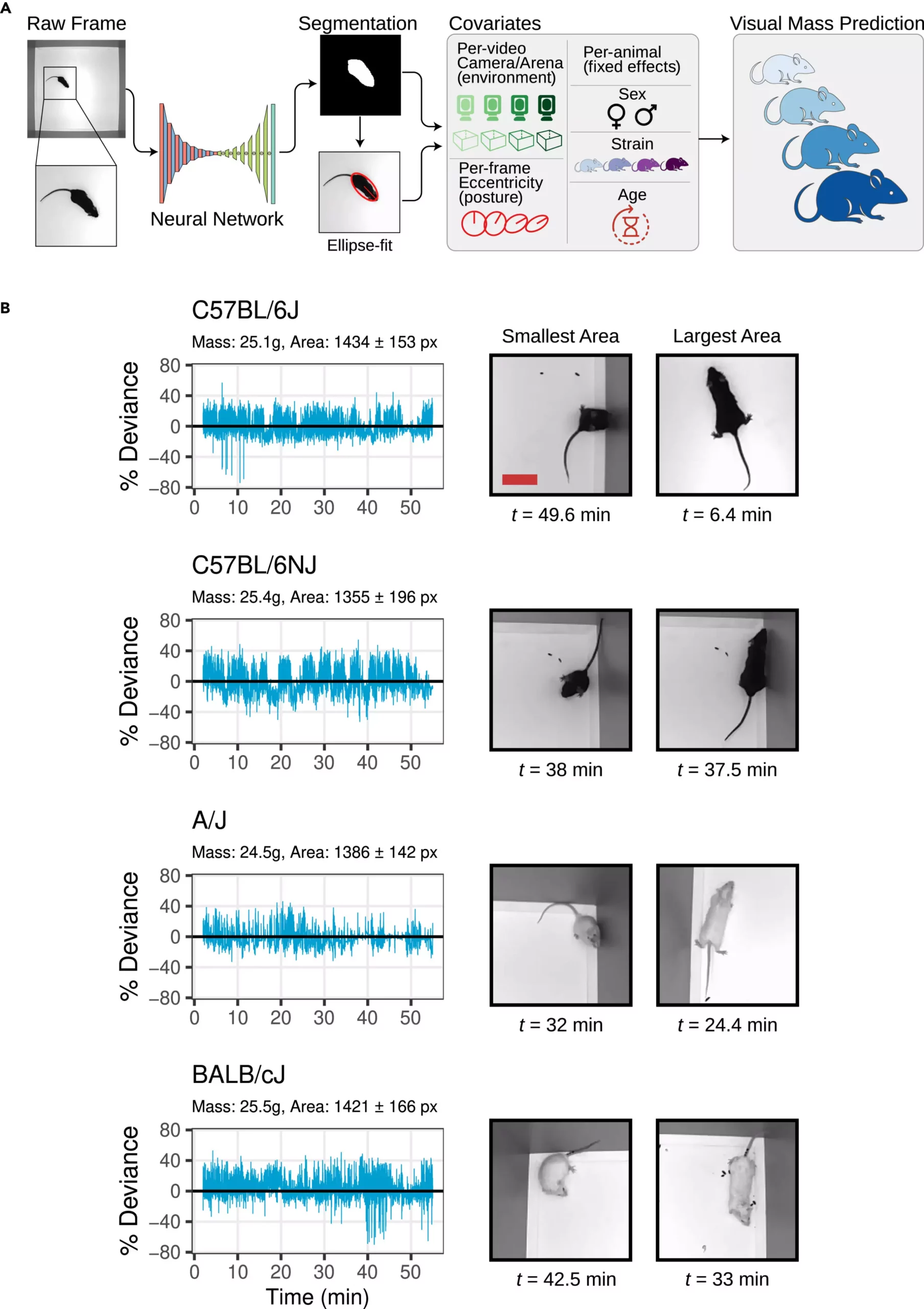Researchers at the Jackson Laboratory (JAX), led by Associate Professor Vivek Kumar, Ph.D., have developed a revolutionary method to accurately measure mouse body mass using computer vision technology. This non-intrusive approach aims to reduce stress on the mice during weighing, ultimately improving the quality and reproducibility of biomedical research involving these animals.
Traditionally, measuring the body mass of mice involved removing them from their cages and placing them on a scale, which could induce stress and introduce variables that may impact experimental outcomes. Additionally, these measurements were only taken once every few days, further compromising the accuracy and reproducibility of data. Recognizing these limitations, Kumar and his team sought a better, noninvasive method to measure mouse body mass over time.
The research team, including computational scientists and software engineers like Malachy Guzman, Brian Geuther, and Gautam Sabnis, turned to computer vision technology to address the challenge. By analyzing a large mouse video dataset, the team developed a method to calculate body mass with less than 5% error. This method, detailed in a recent publication in Patterns, promises to enhance the quality of preclinical studies by providing researchers with a more reliable resource for measuring mouse body mass.
Developing this method was not without its challenges. Unlike static subjects used in industrial farming, mice are highly active and flexible, making it difficult to accurately measure their body mass. The team worked with 62 different mouse strains, each with unique sizes, behaviors, and coat colors, requiring the use of multiple visual metrics, machine learning tools, and statistical modeling to achieve accurate results.
The new computer vision-based method offers several advantages for researchers. It allows for the detection of small but significant changes in body mass over multiple days, which is crucial for studies involving drug or genetic manipulations. Additionally, it has the potential to serve as a diagnostic tool for general health monitoring and can be adapted to different experimental environments and other organisms in the future.
This innovative approach to measuring mouse body mass represents a significant step forward in biomedical research. By utilizing computer vision technology, researchers can now accurately and non-invasively track changes in body mass over time, leading to more reliable and reproducible experimental results. The potential applications of this method are vast, ranging from genetic and pharmacological experiments to general health monitoring in research animals. With continued advancements in technology and methodology, the future of biomedical research looks promising as we strive to enhance the quality and reliability of scientific studies involving animal subjects.


Leave a Reply